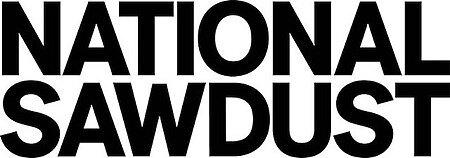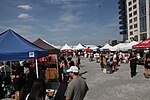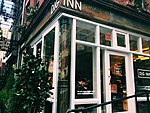National Sawdust

National Sawdust is a nonprofit music producer and venue in Brooklyn, New York with the goal of providing "composers and musicians across genres... a setting where they are given unprecedented support and critical resources essential to create and share their work." The organization is named after its building's original tenant, an early 20th century sawdust factory by the same name. It was founded in 2015 by composer Paola Prestini and attorney Kevin Dolan. Since then, National Sawdust has featured artists and ensembles including Philip Glass, Yo-Yo Ma, Nico Muhly, Yo La Tengo, Chris Thile, Pussy riot, Tanya Tagaq, Agnes Obel, Joan Tower, John Corigliano, the International Contemporary Ensemble, yMusic, Missy Mazzoli, Royce Vavrek, Du Yun, Karole Armitage, and Anthony Roth Costanzo.
Excerpt from the Wikipedia article National Sawdust (License: CC BY-SA 3.0, Authors, Images).National Sawdust
North 6th Street, New York Brooklyn
Geographical coordinates (GPS) Address Nearby Places Show on map
Geographical coordinates (GPS)
| Latitude | Longitude |
|---|---|
| N 40.718902 ° | E -73.96134 ° |
Address
North 6th Street 76
11249 New York, Brooklyn
New York, United States
Open on Google Maps






